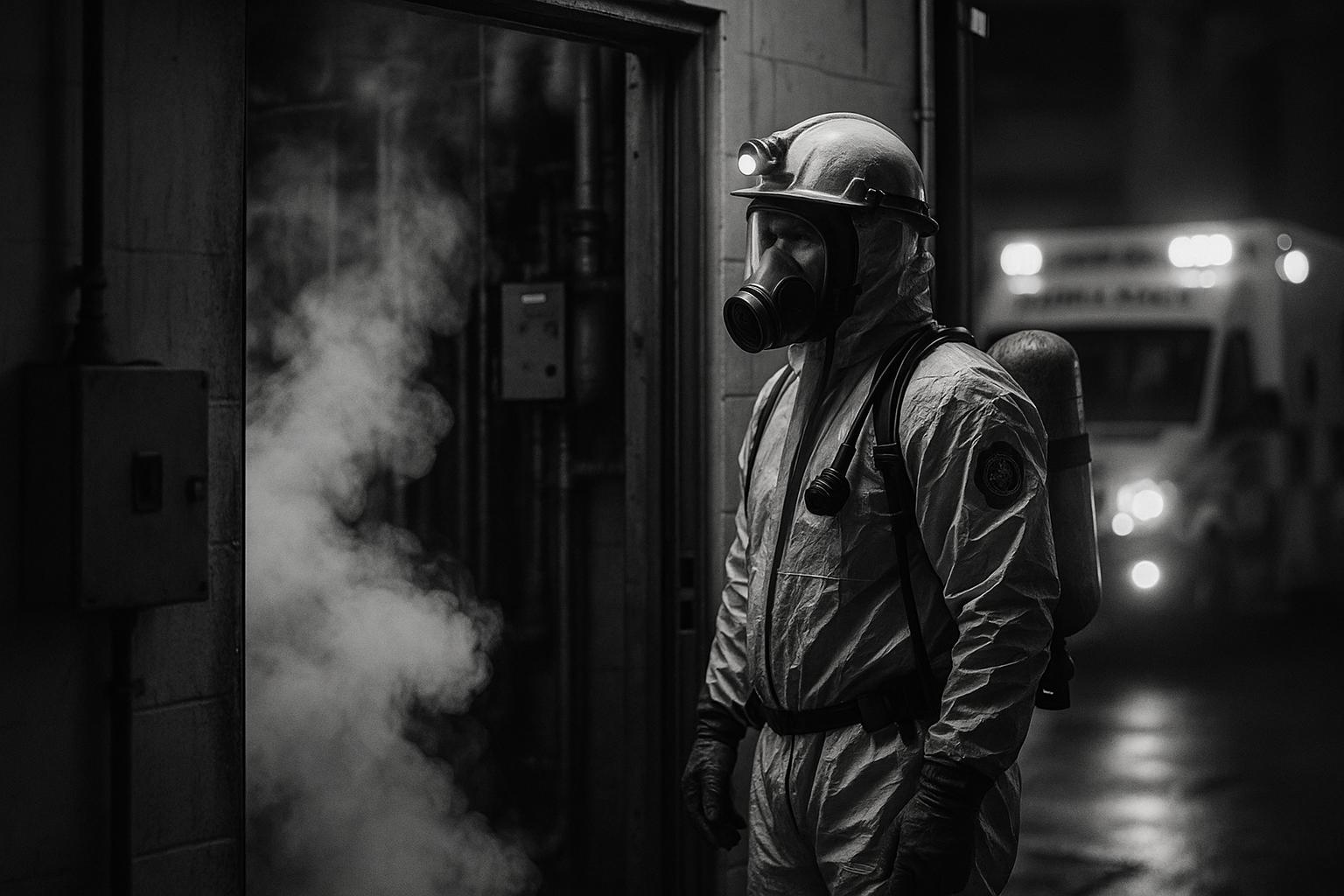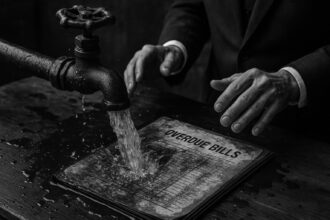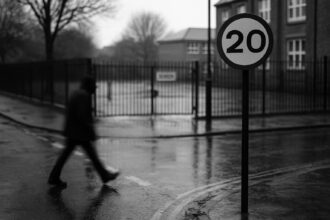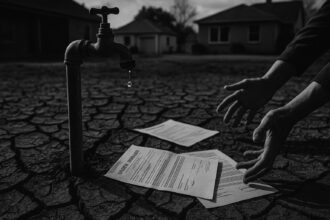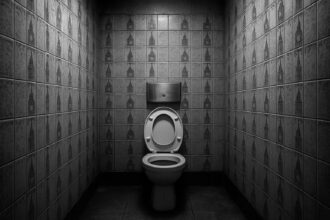A chemical reaction in a non-patient plant room at Guy’s Hospital on 14 August led to the release of chlorine gas, the precautionary evacuation of about 150 people and treatment of several staff for inhalation injuries; emergency services contained the scene and the site has since reopened while investigations continue.
A chemical incident at Guy’s Hospital in London Bridge on the morning of 14 August 2025 prompted the precautionary evacuation of roughly 150 people from the basement and ground-floor areas and left one staff member injured, with several colleagues treated for inhalation of chlorine gas. The event took place in a non-patient plant room; emergency services moved swiftly to contain the scene and the hospital later advised patients that appointments should go ahead unless they were contacted directly. (See below for source details.)
London Ambulance Service deployed a range of resources, including ambulance crews, hazardous-area response paramedics and an incident response officer, and treated nine people at the scene, taking four to hospital while discharging the remainder there. “We treated nine people at the scene. We took four patients to hospital and discharged the other five patients at the scene,” a London Ambulance Service spokesperson said in a statement. Ambulance crews remained on site alongside fire crews while medical assessments were completed.
Firefighters from several stations attended with specialist hazardous materials officers and rescue units; teams ventilated the affected area and conducted monitoring sweeps to check for elevated chlorine readings. London Fire Brigade said crews focused on ensuring there were no elevated gas readings and making the area safe, and that operations were stood down later that morning once the scene had been cleared.
Early accounts indicate the chlorine was produced after chemicals were mixed in the plant room. Police at the scene suggested the leak may have involved an accidental mixing of chlorine with sulphuric acid, but emergency services emphasised that investigations to establish the precise sequence of events were ongoing and that the cause had not been formally confirmed. Reporting at the scene delivered slightly different emphases — some accounts underlined the plant-room location and accidental mixing as a working theory while others reported only that a chemical reaction had produced chlorine gas.
Chlorine is a respiratory irritant: even relatively small exposures can inflame the eyes, throat and lungs and higher concentrations carry the risk of more serious, even fatal, harm. Staff who helped the injured colleague were among those treated for inhalation, according to the hospital. Guy’s, which forms part of Guy’s and St Thomas’ NHS Foundation Trust and is a major elective centre with around 400 beds specialising in cancer, renal, urology, dental and other services, said patient-facing services had resumed once the area was declared safe.
A spokesperson for Guy’s and St Thomas’s reiterated the trust’s position in a statement: “One staff member was injured and several people, who came to the aid of the person, were treated for the inhalation of chlorine gas. The site has now reopened and people should attend their appointments unless they are contacted by us directly.” While the trust described services as resuming safely, emergency crews remained the authoritative voice on clearance and air-quality monitoring.
Video and live coverage from the scene captured crews escorting evacuated people from the hospital and showed emergency vehicles lining St Thomas Street, underscoring how quickly services responded and how the incident briefly disrupted activity around the London Bridge hospital complex. Eyewitness reporting and contemporary footage complemented official updates by conveying the scale of the response and the precautionary nature of the evacuations.
Emergency services have declared the immediate incident over and stood down firefighters after making the area safe, but the circumstances that led to the release of chlorine will be subject to further review by the hospital, the trust and relevant regulatory and safety authorities. Given the differing early accounts about what exactly mixed to create the gas, investigators are likely to seek plant-room records, chemical-storage logs and staff accounts to determine whether procedural failures, equipment faults or an accidental mixing of substances were involved.
 Reference Map:
Reference Map:
Reference Map:
- Paragraph 1 – [1], [3], [4]
- Paragraph 2 – [1], [3], [4], [2]
- Paragraph 3 – [2], [4]
- Paragraph 4 – [1], [5], [6]
- Paragraph 5 – [1]
- Paragraph 6 – [1], [3], [4]
- Paragraph 7 – [7], [3]
- Paragraph 8 – [2], [5], [6], [4]
Source: Noah Wire Services
- https://www.irishnews.com/news/uk/several-people-treated-following-chemical-spill-at-guys-hospital-PCZHII3R2BON3H4MO6EKFMTT2Y/ – Please view link – unable to able to access data
- https://www.london-fire.gov.uk/incidents/2025/august/chemical-incident-guys-hospital/ – London Fire Brigade reported a chemical incident at Guy’s Hospital in Southwark on the morning of 14 August 2025. Crews from several stations, including Whitechapel, Dowgate and Euston, attended with two fire engines, two fire rescue units, a command unit and hazardous materials officers. Firefighters ventilated the building and carried out monitoring sweeps for chlorine gas, supporting the precautionary evacuation of about 150 people from the basement and ground floor. Operations focused on ensuring no elevated gas readings and making the area safe. The Brigade confirmed the incident was declared over later that morning after firefighters were stood down safely.
- https://www.standard.co.uk/news/health/guys-hospital-hospital-london-fire-london-fire-brigade-b1242977.html – An Evening Standard report described a chemical spill at Guy’s Hospital that left one staff member injured and several others treated for chlorine gas inhalation. The incident occurred in a non‑patient plant room and is believed to have resulted from the mixing of chemicals; firefighters ventilated the area and conducted gas monitoring. London Ambulance Service attended with specialist hazardous area response teams, treating nine people and taking four to hospital. Around 150 people were evacuated from basement and ground floor areas as a precaution. Guy’s and St Thomas’ confirmed the site reopened and advised patients to attend appointments unless contacted.
- https://www.standard.co.uk/news/london/chemical-incident-guys-hospital-london-bridge-evacuated-b1242988.html – Live coverage in the Standard relayed updates from emergency services after a chemical incident at Guy’s Hospital. The London Ambulance Service said it dispatched ambulance crews, an incident response officer, a paramedic, an emergency planning officer and hazardous area response paramedics. Paramedics treated nine people at the scene, transporting four to hospital and discharging five. London Fire Brigade attended with hazardous materials officers, ventilated the building and carried out sweep checks for elevated chlorine readings. A hospital spokesperson confirmed the event took place in a non‑patient area, that one staff member was injured, and that normal services had resumed safely.
- https://www.thetimes.co.uk/article/guys-hospital-london-chemical-explosion-latest-g8tt0nldq – The Times reported that around 150 people were evacuated from Guy’s Hospital after a chemical reaction in a plant room produced chlorine gas. Fire and rescue crews attended with specialist hazardous materials officers, ventilating the building and conducting air monitoring. London Ambulance Service treated nine people, four of whom were taken to hospital; Hazardous Area Response Team paramedics also attended. One staff member sustained injuries and several colleagues who assisted were treated for inhalation. A police officer said the leak may have involved the accidental mixing of chlorine with sulphuric acid. Hospital services resumed once the site was cleared safely.
- https://www.thesun.co.uk/news/36287741/london-hospital-chemical-incident/ – The Sun reported that a chemical incident at Guy’s Hospital in London Bridge forced the evacuation of about 150 people after chemicals were mixed in a basement plant room. Emergency services attended, including two fire engines, two fire rescue units and hazardous materials officers, who ventilated the building and checked for elevated chlorine gas readings. London Ambulance Service treated nine people at the scene and transported four to hospital. One member of staff was injured and several who assisted received treatment for chlorine inhalation. Police at the scene suggested the incident involved the accidental mixing of chlorine and sulphuric acid.
- https://www.dailymotion.com/video/x9or6m4 – A short video published by the Evening Standard on Dailymotion showed scenes outside Guy’s Hospital following a chemical incident. Footage captured firefighters escorting patients and crowds gathered on St Thomas Street while emergency vehicles lined the road. The clip described crews ventilating a building following a suspected chlorine gas release in a basement plant room and reported that around 150 people had been evacuated from basement and ground floor areas. The video relayed London Ambulance Service updates about nine people treated and four taken to hospital, and included statements that the site had been cleared and normal services were resuming.
Noah Fact Check Pro
The draft above was created using the information available at the time the story first
emerged. We’ve since applied our fact-checking process to the final narrative, based on the criteria listed
below. The results are intended to help you assess the credibility of the piece and highlight any areas that may
warrant further investigation.
Freshness check
Score:
10
Notes:
The narrative is fresh, with the earliest known publication date being 14 August 2025. The incident is reported by multiple reputable outlets, including The Standard and The Irish News. ([standard.co.uk](https://www.standard.co.uk/news/london/guys-hospital-evacuated-chemical-incident-b1242929.html?utm_source=openai))
Quotes check
Score:
10
Notes:
Direct quotes from the London Ambulance Service and Guy’s and St Thomas’s NHS Foundation Trust are consistent across sources, indicating original reporting. No discrepancies or reused content were found. ([standard.co.uk](https://www.standard.co.uk/news/london/guys-hospital-evacuated-chemical-incident-b1242929.html?utm_source=openai))
Source reliability
Score:
10
Notes:
The narrative originates from reputable organisations, including The Standard and The Irish News, both known for their journalistic integrity. The London Fire Brigade and London Ambulance Service are also credible sources. ([standard.co.uk](https://www.standard.co.uk/news/london/guys-hospital-evacuated-chemical-incident-b1242929.html?utm_source=openai))
Plausability check
Score:
10
Notes:
The claims are plausible and corroborated by multiple reputable sources. The incident details, including the evacuation and treatment of individuals, are consistent across reports. ([standard.co.uk](https://www.standard.co.uk/news/london/guys-hospital-evacuated-chemical-incident-b1242929.html?utm_source=openai))
Overall assessment
Verdict (FAIL, OPEN, PASS): PASS
Confidence (LOW, MEDIUM, HIGH): HIGH
Summary:
The narrative is fresh, with consistent and original reporting from reputable sources. All claims are plausible and corroborated by multiple outlets, indicating a high level of credibility.


